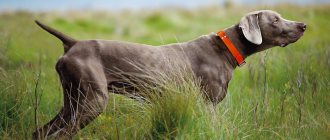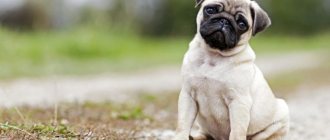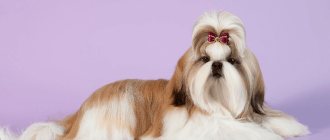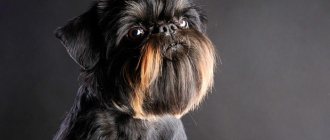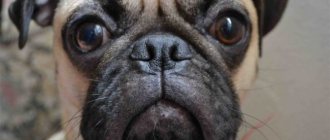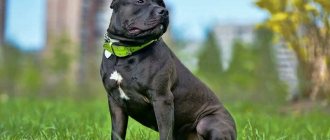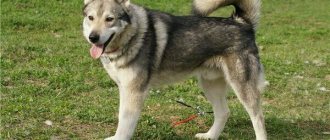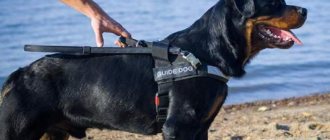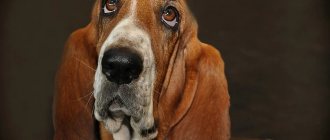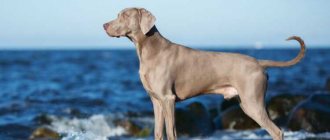The Kurzhaar is a breed of hunting pointing dog bred in Germany and then spreading first across Europe and then throughout the world. Currently, the Shorthaired Pointer, along with the Drathaar, is the most popular and most common breed of hunting dog in our country. In the USA, the Shorthaired Pointer is called the German Shorthaired Pointer, in Russia – the German Shorthaired Pointer. The closest relatives of the shorthaired pointer are the drathaar and langhaar. Let's tell you more about this wonderful breed of dog.
History of the breed
The Shorthaired Pointer (German Shorthaired Pointer) dog breed was developed in Germany from the bloodlines of older German Shorthaired Pointers that were bred from Spanish Pointing Dogs and dogs of local German origin.
Pointing dogs are dogs that have an innate tendency to stand up to game. The very first pointing dogs appeared in the Mediterranean countries several hundred years ago. In those old days, pointing dogs were used to hunt birds using nets and fowls. The heyday of pointing breeds occurred after the advent of firearms and the beginning of their use in hunting game birds.
From Spain, Italy and France, the first pointing dogs gradually spread throughout Europe. Some of these dogs came to Great Britain and became the ancestors of the island pointing breeds (pointers and setters), the other part came to Flanders and other European countries and became the ancestors of continental pointing dogs.
From Flanders, the ancestors of German pointing dogs came to German estates, where the Württemberg pointer appeared from crossing with local Hanoverian hounds, and later with the Spanish Burgos Perdigeros. From which, after its ennoblement with the blood of a pointer, the shorthaired pointer appeared.
The Germans, with their usual thoroughness, began breeding work with German shorthaired pointers, which was aimed at breeding dogs of a lighter type, accelerating their speed and increasing their sense of smell.
A serious basis for the development of the shorthaired pointer breed was the creation in 1897 of the “Studbook of the German Shorthaired Pointer”, in which Prince Albert Solms-Braunfels collected the characteristics of the breed, rules for evaluation and field testing of dogs of the shorthaired pointer breed.
Today, the German Shorthaired Pointer is still being worked on to breed, improve the breed and test this wonderful breed of dog. The shorthaired pointer has become one of the most common breeds of pointing dogs in the world. The popularity of shorthaired pointers in our country is growing every year.
Hunter reviews
Eugene. I have had the Kurzhaar for seven years now. This is an excellent assistant in hunting ducks, partridges and quails. I really like the fact that the dog can do a stance - this makes it much easier to find game. We never returned from hunting without catch.
Anton. I am a hunter, and I can’t even imagine any other dog besides the Kurzhaar next to me. This unique animal is simply created to seek out and pick up game. In addition, our Hans became a real family member for us.
Before you start choosing a puppy, we suggest watching a video about the Shorthaired Pointer breed. We wish you pleasant viewing!
Appearance
The breed standard establishes the breed characteristics that the Shorthaired Pointer must meet:
- The shorthaired pointer is a strongly built dog, dry, proportionally built, the bones are strong, but not rough. The shorthaired pointer has well-developed muscles and free, easy movements.
- The shorthaired pointer is a large breed of dog, the height of a male at the withers is 62-66 cm, females are 58-63 cm.
- The shorthaired pointer should not be too thin like a greyhound, but it should not be too heavy either. A male should weigh 25-32 kg, a female 20-27 kg.
- The bones and muscles should be well developed, the shorthaired pointer's skin should be quite thick, dense, without folds.
- The shorthaired pointer's chest is developed, deep, reaching to the elbows, and moderately wide. The ribs are arched. The false ribs are quite well developed and form a smooth transition from the chest to the abdomen.
- The back is straight, strong, wide, muscular, the spinous processes of the vertebrae are hidden by muscles. The withers are well defined. The topline is straight, slightly sloping. The croup is wide, long, slightly sloping. The loin is short, wide, and muscular. The belly is moderately tucked, but not to the wasp waist.
- The shorthaired pointer's head is dry, neither heavy nor light, proportional to the body and gender of the dog. The occipital protuberance is not very pronounced, the brow ridges are distinct, but not too pronounced. Smooth transition from forehead to muzzle.
- The muzzle is long, not too wide, not too narrow, slightly tapering towards the nose, but not too sharp. The muzzle has a hump, which is more pronounced in males. The lips are not heavy, the upper lip slightly covers the lower.
- The nose is wide and matches the base color. The nostrils are mobile and well developed.
- The teeth are white, healthy, and have a regular scissor bite. 42 strong teeth.
- The Shorthaired Pointer's eyes are medium-sized, slanted, not protruding and not deep-set. The eye color should be brown or light brown.
- The ears are hanging, of medium length, set high and wide. The length should reach the corner of the lips. They fit tightly to the head, the ends of the ears are blunt-rounded.
- The neck is of medium length, in harmony with the general appearance of the dog, muscular, set at an angle of 40 degrees to the body. The neck expands from the dog's head to the shoulders, is slightly arched in the upper part, oval in cross section. The scruff is slightly convex.
- The front legs of the shorthaired pointer are straight when viewed from the front; when viewed from the side, they are well located under the body of the dog, dry, bony, and muscular. Long shoulder blades covered with strong muscles. Elbows point straight back.
- The hind legs, when viewed from behind, are straight, parallel to each other. Long, wide and muscular thighs, with a well-defined hip angle. Strong knee joints. The lower legs are long, muscular, with clearly defined tendons.
- The front and hind feet are round to oval, arched, with close-fitting toes. The paw pads are strong and rough. The claws are strong.
- The shorthaired pointer's tail is set high, thicker at the base, and most often docked. When the dog is excited, it holds its tail in a horizontal position or slightly above the line of the back. In some countries, tail docking is illegal.
- The shorthaired pointer's coat is straight, short, shiny, hard to the touch and dense. The coat fits tightly to the dog's body. The length of the hair on the body is 1.5-2 cm, on the ears and head the hair is shorter (up to 1 cm) and much softer. The hair on the legs is shorter and coarser than on the dog's body.
- The color of the shorthaired pointer can vary greatly, the main types of coloring are: coffee piebald, coffee speckled, coffee gray, solid coffee. German hunters prefer dogs with darker shades of coffee, often even solid coffee. It is believed that more contrasting colors are more noticeable in the autumn forest or swamp, especially at twilight. The color of the shorthaired pointer may contain spots, and their location can be very different. Large spots may be located on the dog's back. Smaller spots may be scattered throughout the dog's body.
Tips for choosing a puppy
Dogo Canary: photo, price and features
You should not buy a baby from breeders with a dubious reputation, and you should not buy a puppy for a suspiciously low price. Such savings may result in health problems for your future friend.
It is better to contact specialized nurseries. Before getting a puppy, you need to think about the gender of the baby. Males are less trainable and more stubborn. It won’t be a big problem for them to sneak out from under the owner’s nose. Females are more friendly and obedient. The desire to run away from the owner is practically absent.
The most optimal age to purchase a puppy is 2-6 months. When choosing a shorthaired pointer, you should take a closer look at the most energetic and cheerful puppy. Shining eyes and shiny fur are the key to good health for the baby.
Temperament
The Shorthaired Pointer dog has a balanced, reserved, not nervous, not timid or aggressive character.
The shorthaired pointer has a tendency to dominate, the owner of such a dog must be a strong-willed person, with a strong character, capable of establishing and maintaining his leadership over the shorthaired pointer; if the owner cannot become a leader for his dog, then such a dog can get out of control and become unmanageable.
The shorthaired pointer constantly needs intellectual and physical work, without this the dog will get bored and throw out its unspent energy in the house.
An adult, well-bred shorthaired pointer is a friendly dog that gets along well with children, even small ones. School-age children are the Shorthaired Pointer's best friends in active games.
The shorthaired pointer is strongly attached not only to its owner, but also to all members of his family. The shorthaired pointer must be aware of its own importance, feel needed, loved, and a full-fledged member of a friendly pack. In a critical situation, the shorthaired pointer is able to stand up both for itself and for any other member of its flock.
The shorthaired pointer has good guarding qualities; it is an excellent watchman and protector. A wary attitude towards strangers can lead to aggression, then the shorthaired pointer barks loudly at the stranger until its owner approaches. It is not recommended to develop too strong a protective instinct in a shorthaired pointer, as it can lead to a distortion in the dog’s psyche.
In order for a shorthaired pointer to get along well with other dogs, it must undergo socialization in its youth and learn to have an even attitude towards other dogs.
It is not recommended to keep cats and other pets in the house where the shorthaired pointer lives; after all, the shorthaired pointer is a hunting dog; its strong hunting instinct can turn on at any time, which will lead to dire consequences for other domestic animals.
We are building an aviary
Drathaars are adapted for running over rough terrain, so it is not recommended to make the floor in the enclosure asphalt or covered with paving stones. A lawn or gravel surface is ideal for flooring.
More complete material on building an enclosure for a draathar can be found here.
The dog needs to keep his muscles in good shape and 10 square meters of enclosure area will be enough for him. As we already wrote above, one of the walls of the enclosure is made blank, and the rest are covered with chain-link. If the pet had enough shade over the enclosure, you can install a canopy.
When conceiving the design of building a dog house with your own hands, drawing up drawings and calculating the dimensions, you must immediately take into account that this is her home for years, which means it must correspond to all the characteristics of the resident, be comfortable and attractive for him. The best option for a dog house is a portable one. Over time, the space occupied by the four-legged guard may be needed for construction, planting a tree or setting up a flower bed - then you can simply move the house to another place without causing concern to the animal and without creating construction problems for the owner.
Advantages and disadvantages
Advantages of shorthaired pointer
The shorthaired pointer has a huge number of advantages, which have made this dog breed so popular both in our country and throughout the world:
- One of the main advantages of the shorthaired pointer is its versatility; with the shorthaired pointer you can successfully hunt a wide variety of game species, from quail and snipe to wild boar and elk. With a shorthaired pointer you can hunt marsh-meadow, field, forest, waterfowl, as well as wild animals.
- The shorthaired pointer has excellent physical characteristics, endurance, good intellectual abilities, and is easy to train and coach.
- The Shorthaired Pointer's short, dense coat protects well from insects, does not collect thorns and does not require special care, except for regular brushing with a special brush.
Health and life expectancy
On average, the Kurzhaar lives 12...14 years. Diseases that occur in dogs of this breed are caused either by genetic predisposition or an active lifestyle:
Most often, the following diseases occur in shorthaired pointers: eczema, otitis media, cataracts, and volvulus.
- Volvulus. An acquired condition requiring immediate surgical intervention.
- Hip dysplasia. The disease can be either congenital or acquired. Treatment depends on the stages: restraining therapy can be used, or joint replacement can be performed.
- Deviations in the functioning of the thyroid gland. Most often, the disease manifests itself as a lack of hormones.
- Otitis (ear inflammation).
- Raw eczema. The pathology manifests itself as a constantly weeping wound. The area of inflammation itches and hair falls out. A scraping will help identify the cause. Treatment is prescribed depending on the pathogen.
- Licked granuloma. The dog constantly licks his front paws. The cause is most often boredom. There is no specific treatment. The main recommendation is to provide your pet with constant communication. Medicines may be prescribed if a secondary bacterial infection occurs.
- Von Willebrand's disease. Hereditary pathology. Sick dogs are excluded from breeding.
- Cataract, inversion/inversion of the eyelid.
- Epilepsy.
Hunting with shorthaired pointer
- The shorthaired pointer is a breed belonging to the group of pointing dogs, that is, poultry dogs with a stance.
- The shorthaired pointer is a breed characterized by its versatility; it can work on all types of game birds and animals.
- With a shorthaired pointer you can hunt marsh and meadow game: snipe, great snipe, garcock, corncrake.
- The shorthaired pointer works on upland game: wood grouse, black grouse, hazel grouse, woodcock, pheasants.
- The shorthaired pointer works well on field game: quails, partridges.
- The shorthaired pointer swims well and has excellent retrieval ability, so it can be used for hunting waterfowl.
- Thanks to its dense and stiff coat, the shorthaired pointer is not afraid of insects, but its short coat does not protect well from thorns and sedges.
- When moving, it can withstand frost down to -20 degrees, but if the shorthaired pointer is motionless, especially in the wind, it can quickly freeze.
- In excitement, he is able to rush into icy water after game, but after leaving the water he can freeze, you need to wipe him dry and cover him with a cape or blanket.
- As a universal breed of pointers, shorthaired pointers can search for wounded animals using a blood trail and hunt hares and foxes.
- Many owners bait the shorthaired pointer for wild boar and elk. Whether to do this or not is a question that the owner must decide for himself. Many people believe that letting a shorthaired pointer near a wild boar is too dangerous, after all, this is not an aviary gilt. The shorthaired pointer cannot be compared with a good husky in terms of work on ungulates.
- When choosing and purchasing a shorthaired pointer puppy, be sure to study its pedigree and make sure that the puppy’s ancestors have working diplomas. It is better to involve a specialist in studying the puppy’s documents, who can check the information contained there through his own channels. It will be very good if you watch the puppy’s parents at work, either on a real hunt or in field trials.
- Many shorthaired pointer lovers buy puppies or even adult dogs abroad, most often in Germany, Austria and other European countries.
- It will be better if a professional trainer handles the shorthaired pointer's training; even better if you do it yourself, but under the supervision of an experienced trainer.
Character and hunting qualities
This hunting dog has a gentle, friendly character and develops a strong bond with its owner. Despite the fact that Kurts are dogs of one owner, they love all family members. They love to be the center of attention and have a hard time with loneliness. They need to communicate with people and always try to please them.
If a dog is not socialized in time, it will grow into an aggressive, uncontrollable animal.
The shorthaired pointer is not suitable for owners who are rarely at home. An abandoned dog will suffer from mental disorders. This breed is known for being child-friendly. Kurts adore teenagers and are patient with small children. However, this does not mean that cops are excellent babysitters. They may miscalculate their strength during play and accidentally injure the child.
Shorthaired pointer and cat are not the best combination. Germans are natural hunters and will treat small animals as potential prey. If the owner decides to keep a chicken and a cat in the same apartment, he needs to make a shelter at a height. The cat can hide there.
Shorthaired Pointers are prone to dominance, so they need a strong-willed, authoritative owner. The owner will have to constantly prove superiority so that the dog does not sit on the neck. Germans are a very energetic and intelligent breed. They love training with an instructor. Kurts are successful in fetch and agility, love to play Frisbee and are good swimmers. They will become excellent companions on hikes and will support any initiative.
The main purpose of the Kurts is hunting. They make excellent gun dogs. They work with all types of birds and successfully drive small animals. Shorthaired Pointers can hunt in fields, swamps and other bodies of water.
The hard, dense coat protects the dog from insects and adds frost resistance. The Germans can tolerate cold temperatures down to -20 degrees, but they catch cold easily when traveling in the back or in a sleigh. Kurts can work even in cold water. The main thing is to dry your dog after bathing.
Features of training and education
- The Shorthaired Pointer is a dog with an open character, but prone to withdrawing into himself. Any shorthaired pointer training begins with establishing close contact and trust between the dog and its owner.
- The shorthaired pointer is a very active dog, puppies and young dogs of this breed are literally overflowing with energy. Before starting training with a dog, you need to give it the opportunity to throw out excess energy, and only after that begin training.
- Training a shorthaired pointer gives pleasure to its owner, the dog's high intelligence, passion for work, good contact between the shorthaired pointer and a person, all this quickly leads to success, which pleases the owner.
- The shorthaired pointer easily masters the general training course, but for this its owner will need more time and persistence than when training a dog of another breed.
- The shorthaired pointer perfectly senses the mood of the owner, which is transmitted to the dog; if you are tired or irritated, then it is better not to train the dog at all on this day, nothing good will come of it.
- An overly strict punishment or a long, tedious drill can lead to a state of “I don’t hear anything, I don’t understand anything, I can’t do anything.” Don't let your dog get into this state.
- The shorthaired pointer must understand his position in the pack; sometimes he can try to become the leader of the pack; such attempts must be immediately suppressed by pinning the dog to the ground.
- Punishment of the Shorthaired Pointer should first of all be verbal, with the correct intonation. Mechanical impact (pressing the dog to the ground, pulling the leash) is acceptable in extreme cases. There is no need to hit the shorthaired pointer.
- The training of shorthaired pointers should be done by a professional who knows the specifics of training continental pointers. The best option is when the dog owner himself does the training under the guidance of an experienced trainer. Incorrect training can quickly ruin a good dog.
The simplest solution and step-by-step recommendations
A novice home craftsman first needs to visualize the structure he wants to create. For a novice builder, unnecessary imagination usually ends when he starts drawing up a drawing, drawing or sketch.
The product, especially if it is the first, should be planned to be simple, understandable in design, simple rectangular in shape, with a central entrance, single-pitched. First you need to understand that the shape of the booth is an ordinary closed box with a lid.
Drawing of a dog house with dimensions
First the floor is made
- This is a shield with the internal dimensions of the length and width of the booth, but with an addition of 12 cm to the length and width. Four timbers are laid in the shape of a frame on a level table. They can be connected to each other using metal corners.
- On one side, waterproofing is attached to the frame - roofing felt, roofing felt, glassine. There are another dozen or two brand names, but you can choose the cheapest option. You can use a stapler for fastening, you can nail thin slats so that the roofing material does not sag.
- Immediately after filing the insulation, two or three beams are nailed along or across the frame. It is better to paint them or cover them with bitumen mastic - they will stand on the ground, and the coating will save them from rapid rotting.
- The frame is turned over and insulation is placed inside it. You can cover the insulation, if it is glass wool or other dust-producing material, with any insulating film. Next, a continuous plank flooring is made from tongue-and-groove boards 30-40 mm thick.
Maintenance and care
When keeping a shorthaired pointer in your home, you should pay attention to some points:
- Feeding the Shorthaired Pointer should be complete and properly balanced, no matter whether you feed the dog with specialized dog food or natural food.
- The shorthaired pointer, like any pointer, should not be overfed; carefully monitor the dog’s weight, try to maintain it within the breed norm: for a male 25-32 kg, for a female 20-27 kg.
- The Shorthaired Pointer is a short-haired breed of dog that has a pronounced seasonal shedding. It is important to properly care for the shorthaired pointer's coat. Two or three times a week, the Shorthaired Pointer should be combed with a special brush or massage mitten. During the shedding period, comb your dog every day, this will rid you of hair in the apartment.
- The Shorthaired Pointer should be bathed no more than once a month. Bathing too often will cause your dog's coat to lose its natural shine due to the loss of the fatty coating that protects the dog's coat from dirt. When bathing a shorthaired pointer, it is advisable to use unscented shampoo so that the dog does not lose its hunting sense.
- The shorthaired pointer's floppy ears require constant attention from the dog owner. They should always be dry and clean. Dirt from the ears is removed with a cotton swab or damp cotton pad. If you see that your shorthaired pointer is scratching its ears a lot, contact your veterinarian; your dog may have ear mites.
- Keep an eye on the shorthaired pointer's eyes; they should be shiny and clean. To care for your eyes, you can wipe them with a cotton pad soaked in weak tea. If the shorthaired pointer's eyes are very watery or festered, the dog should be taken to the vet immediately.
- In the summer, the shorthaired pointer's claws grind down on the asphalt on long walks; in winter, you may have to trim the claws with a nail clipper once a month.
- It is better to keep the shorthaired pointer in a warm apartment; if you are going to keep the dog outside, in an enclosure, he will definitely need a heated kennel.
- The shorthaired pointer needs long, serious walks; just a walk in the yard will not work. He needs serious physical activity, without it everything will result in the destruction of the apartment, aggression and stress from boredom. The shorthaired pointer is created for hunting; if the owner cannot hunt with him, then he needs to find some kind of alternative that replaces hunting.
- When walking in the city, the shorthaired pointer must be on a leash. There are too many dangers in the city; if a shorthaired pointer decides to chase a cat, it will be very difficult to stop him.
- When walking your dog in winter or in heavy rain, it is advisable to wear a dog overall or blanket. The shorthaired pointer's coat does not retain heat well. While moving, the shorthaired pointer does not freeze for a long time, but as soon as it starts to walk or stops, it can quickly become hypothermic.
- The German pointer needs her own personal place, where the dog should feel like a master. When the dog is in its place, no one should disturb or disturb it.
The shorthaired pointer is considered one of the universal dog breeds that can be kept both indoors and outdoors. Keeping a shorthaired pointer cannot be called difficult and burdensome for owners, since the pet is completely independent, calm, peaceful, and not pretentious. He, like any other four-legged friend, needs care and attention. When the owner is responsible for his upbringing from an early age, the result is a loyal, obedient dog with a balanced nervous system, capable of quickly remembering commands and amenable to training.
Finding the best place
The location of the booth for our younger friends is an important point
The choice of location must meet a number of criteria:
- The structure should be at a slight elevation relative to the surrounding space, then the pet will never be in a puddle or sleep on a damp floor. This condition is very important to prevent water and snow from entering the dog's house.
- If possible, the kennel should be installed near buildings and fences - this will protect the animal from drafts, which are more destructive for dogs than severe frosts.
- The ideal place for the booth is in the shade of a tree, but only partially; the sun is also very important for the dog’s health.
- A hard, natural covering around the booth is a necessary and important condition not only for the animal, but also for the owner’s convenience of approaching it. Asphalt and concrete are not the best surfaces; over time, they can cause your dog to develop paw diseases.
- The location of the house too close to the path with constant traffic of people makes the animal nervous and causes him causeless anxiety. The owners themselves will also not be pleased with the endless barking of dogs.
- The dog's instinct provides for the protection of the territory, and to always see and hear everything without leaving the kennel - a condition for its design and choice of location. The ability to have a good overview of the protected area is an important condition for the animal’s peace of mind and the reliability of protection.
Why you can't keep a dog in a barn
A barn is no place for a dog
Often, having outbuildings on the property, the owner of the dog prefers not to build a separate house for it, but keeps it in a barn.
This is strictly contraindicated:
- the darkness of the barn constantly keeps the dog in an alert state and is very poorly tolerated by the animal
- a constant reaction to sounds made by insects or rodents causes irritation, nervousness, and anxiety in animals
- the heat generated by the dog’s body will completely heat a small structure, but not a barn
- from the barn it is impossible to observe what is happening outside, this causes depression in the dog, lethargy, and heart disease
- lighting a barn with electricity does not replace daylight and has a bad effect on vision
- It is absolutely unacceptable to keep dogs together with farm animals and poultry.
Keeping a shorthaired pointer in an outdoor enclosure
When keeping a shorthaired pointer in an enclosure, its owner will have to comply with some requirements: the pet’s place of residence must be bright, clean, dry, spacious and protected from drafts. Fresh drinking water and toys should be kept in the enclosure.
The enclosure for a German pointer should be 2/3 m in size. Its base is best made of metal, and the floor, wall and ceiling are made of wood. It is imperative to provide a strong latch so that a strong dog cannot get out. You will need to install a booth in the enclosure, which will serve for the animal’s comfortable sleep and rest.
When keeping a shorthaired pointer on the street, it is not recommended to keep the dog on a chain, since in this way it will never be possible to raise a loyal, kind friend. The chain will always cause a desire to get rid of it, anger, irritate, depress the pet, and even cause negative emotions towards the owner who has prepared such a fate for him. There have been cases when the chain caused injury to the animal. Having built an enclosure, the owner of a German pointer will solve several issues at once: provide the dog with relative freedom, create reliable protection from the cold, and get an excellent guard. The only caveat is that you can build an enclosure only if you live in a private house and have your own plot. If the owner of this breed lives in an apartment, he will have to keep the pet at home.
If it is impossible to build an enclosure or there is not enough space for it, you will have to install a doghouse for the dog, but only if the owners live in a region with a warm climate. The booth must be spacious enough to accommodate the large size of the animal. It is better to choose a place at higher elevations, this will help avoid excessive humidity. The shorthaired pointer's home needs to be insulated, hay laid on the bottom, and a blanket or soft rug placed on top. Keep the kennel clean, regularly clean the inside, and also clean the area where the dog lives.
Drawings of a winter kennel and a warm enclosure for a dog
Having decided on the dimensions, you should draw a sketch of the booth, observing the following rules:
Here is a drawing of a classic winter booth, on the basis of which many projects of FORUMHOUSE participants have been implemented.
And these are the drawings of an insulated enclosure for an Alaskan Malamute puppy, built by our user with the nickname Sat-Electric.
The walls of the enclosure are sheathed and insulated in the place of the built-in booth
The drawings were made based on the size of the dog with a small margin for the internal partition.
Keeping shorthaired pointer outdoors in winter
A short-haired dog cannot tolerate severe frosts, so keeping a Shorthaired Pointer outside in winter is possible only in the southern regions, where the lowest air temperature is at least -7 degrees. The German pointing dog can withstand mild frosts, but only on condition that the doghouse for it is sufficiently insulated.
Keeping a shorthaired pointer in winter at low temperatures is impossible due to its short fur, so if the owners live in the central and northern regions, the animal will have to be taken into the house for this period.
Even if a German pointer is kept outdoors in an enclosure, it needs to be walked daily, allowed to run freely, and not neglect physical activity and training. This will have a positive effect on her health and mental state.
Design requirements and materials
Large breed dogs with good coats are not afraid of the cold. If they are outdoors all the time, they grow a thick undercoat, which perfectly protects them from the cold. It is much worse for them if they are either warm or cold. What’s also bad for them is a draft. Then a thick undercoat does not help. Therefore, one of the long walls of the enclosure must be sewn up; one or two of the short ones may be closed. With this device, in any direction of the wind you can find calm and the dog does not have to climb into the kennel.
At least two adjacent walls must be sewn up
Care and feeding of a shorthaired pointer puppy
When caring for a shorthaired pointer puppy, the owner must perform every action with the utmost caution so as not to cause pain or discomfort to the animal, thereby not causing rejection of a particular procedure.
Regular care of the shorthaired pointer and proper maintenance from an early age will help raise a strong, hardy, energetic and cheerful pet.
Feeding a shorthaired pointer puppy and an adult has its own characteristics and differences. In the first month of life, the puppy should eat its mother's milk. In the absence of such an opportunity, the owner takes care of feeding the baby, using formula with cow or goat milk for the first months, gradually including dairy products such as cottage cheese, kefir, fermented baked milk, and yogurt in the diet. From 3 months, the amount of milk is reduced, solid foods are introduced into the diet: offal and cartilage, which are necessary when changing teeth. It is too early to give minced meat during this period, since the puppy is not yet able to chew it thoroughly, which means it will not be digested well.
It is useful to give porridge from any cereal cooked in meat broth from the 3rd month of life. Barley and potatoes should be avoided. Salt is also not needed when preparing dog dishes.
There are many options for what to feed a shorthaired pointer puppy, the main thing is to make the menu varied and balanced, containing proteins, fats, carbohydrates, vitamins, minerals, and fiber. Fiber is found in various vegetables: zucchini, cabbage, pumpkin and others.
For the first 5 months, feeding a shorthaired pointer puppy should be done 5 times a day, starting from the age of six months, its number is reduced to three. Upon reaching 12 months, the grown and strengthened pet is transferred to two meals a day.
When preparing a diet for a puppy, you need to completely exclude sweets, flour products, spicy, fried and smoked foods, as well as tubular bones.
TOP nicknames
The name is chosen taking into account the pet’s character, appearance, and behavior. The nickname should be liked by the owners and be easy to remember. The most common nicknames are shown in the table.
Table - TOP nicknames for shorthaired pointer
| Initial letter of nickname | How to name a shorthaired pointer “boy” | How to name a shorthaired pointer “girl” |
| A | — Armstrong; — Atom | — Iris; — Aqua |
| B | — Velvet; — Berkut | — Barbara; —Bridget |
| IN | — Viking; — Warrior | — Venus; — Vilena |
| G | — Gangster; — Hudson | - Geisha; — Grace |
| D | - Dandy; - Doctor | — Daisy; — Savage |
| E | - Huntsman; — Elon | — Eva; — Hedgehog |
| AND | — Jacques; - Bug | — Jasmine; — Zhulya |
| Z | - Beast; — Call | - Fun; — Star |
| AND | — Izzard; — Hidalgo | — Spark; —Isis |
| TO | - Gyrfalcon; — Captain | — Comet; — Country |
| L | — Lucky; — Ludwig | — Lassi; — Legend |
| M | — Marvin; — Maurice | - Dream; — Macbeth |
| N | — Nigel; — Norton | - Naida; — Nana |
| ABOUT | — Ozard; — Orion | — Courage; — Omega |
| P | — Parker; —Pirate | — Palm; —Pink |
| R | — Roll; — Wrigley | — Rocket; — Roxana |
| WITH | — Saiga; — Sinatra | — Sunny; - Fairy tale |
| T | - Fog; — Takashi | - Tootsie; — Trixie |
| U | - Daring; — Urchi | - Whitney — Unka |
| F | — Phantom; — Foreman | - Flute; —Frida |
| X | — Haggis; - Tail | — Hayley; — Hannah |
| C | — Ceron; - Tsar | — Cilli; — Queen |
| H | — Chaplin; — Chicago | — Chara; — Chile |
| Sh | — Jackal; — Schmidt | — Sherry; — Shimmy |
| E | — Edwin; — Eric | - Amy — Ashley |
| YU | — YouTube; — Nimble | — Yula; — Yuka |
| I | - Yard; — Hawk | - Berry; — Yana |
Nutrition of an adult shorthaired pointer
The German pointer is a hunting breed with large size, strength and endurance, therefore the diet of this dog must be taken responsibly. The diet of an adult shorthaired pointer can consist of both natural food and dry food. Having settled on granules, you should give preference to those foods that are intended for active, energetic dogs. In addition, dry food must be appropriate for the age of the animal.
The advantage of ready-made food is that you don’t have to prepare the food; you just need to pour the required amount of granules into a bowl. It is also important that high-quality food provides the dog with all the necessary microelements and vitamins, so additional supplements are not required.
What to feed a shorthaired pointer if the owner decides to stick to natural food? First of all, it is important to consider that every day 50% of the diet should consist of meat - cooked or raw. Chicken, beef, pork, rabbit and offal are suitable. However, sausage, frankfurters and various smoked meats are harmful products that negatively affect the animal’s liver.
Every day you need to include fresh and boiled vegetables in your four-legged friend’s daily menu. It is better to exclude radishes, potatoes, pasta, peas, and sweets from the diet. Once a week, the pet should receive sea or river fish, fish oil, eggs, and dairy products. To improve the functioning of the intestinal tract, you should give porridge.
Command training
You can begin learning basic commands when the shorthaired pointer socialization process begins. It is best if the puppy at that time is no more and no less than 2.5-3 months old.
Important! It is best to conduct lessons with your dog after he has walked outside. Kurzhaar must be calm.
The owner must also maintain external calm during classes. German hound puppies are very good at reading emotions from the owner’s face and react sharply to changes in his mood. You cannot shout at the dog, much less use physical punishment. After each well-performed task (even if it’s the 30th time), the puppy should be praised and treated to something tasty.
Content Features
The shorthaired pointer is a breed that can be kept both in an apartment and in a yard. The pet is smart and peaceful, but requires increased attention. In order to raise a devoted and obedient dog, you should approach training with the utmost seriousness.
In the apartment
Keeping a pet like the shorthaired pointer is a simple and easy task for the owner of an apartment. The dog has short hair, which makes it convenient to keep in a small room - cleaning will not be carried out more often than usual. The animal should be given its own corner in the apartment - this could be, for example, a warm and wind-protected place in the bedroom, living room, or a closet that is definitely not locked. The dog must be walked 2 times a day for 1–2 hours.
On the street
The dog must be kept in an enclosure suitable for its size. It must be light, clean and spacious. The room needs a booth that matches the size of the dog, a wooden floor, 2 bowls and toys. In the cold season, the pet's enclosure must be protected from snow and wind, and in the summer from the sun.
How do you cope with winter?
In winter, a dog can only be kept outside at above-zero temperatures. The shorthaired pointer can live outdoors if the temperature is not lower than +7 ºС. During the cold season, it is advisable to put hay in the booth. It needs to be replaced 2 times a week, the booth should be washed once a week.
How to make a dog house for the winter: work order
The construction of a winter booth begins with the floor, which is made double and warm. Then they make the frame, walls, ceiling.
We made the inside of the booth from fiberboard which was nailed to a 50mm block, and 50mm PPS was placed in the resulting niche. They decorated it with clapboard.
The dog will be comfortable in such a booth at any time, but in severe weather conditions the opening should be closed with special curtains.
Take any durable material slightly larger than the entrance to the booth. It is cut into wide strips, which are overlapped together at the top. The top is secured with a bar above the entrance to the booth. Show the dog once that this is not a solid wall, and he will climb in and out without any problems.
Here is a winter booth made by our member with the nickname Shamilich. There are two rooms in the booth: a “winter road”, the dimensions of which were calculated based on the size of the dog, and a vestibule.
Mating and birth
Puberty begins at 8–12 months, and complete physical development occurs by 2–3 years. A physically healthy female dog goes into heat twice a year.
But there are dogs that are empty once a year or 3 times every 2 years. The emptying period lasts about 25 days. The main symptoms of its onset are swelling of the external part of the genital organ and bleeding. On the eighth day, the discharge decreases, and the bitch allows the male.
While stroking the dog with your hand, they check whether it is ready for mating with a male; when it is ready, it turns its tail to the side .
Coitus lasts approximately 15–20 minutes. You can repeat the mating a second time only after 24 hours have passed after the completion of the first one.
Gestation of puppies lasts 2 months, during which time the dog owner needs to prepare for the birth of puppies. The first thing to do is prepare an area for the puppies. A box or box is suitable for this, in which you need to lay a soft bedding. Several beddings should be prepared; they will become dirty. The second is items to help with delivery: scissors to cut the umbilical cord, a heating pad and a cloth to dry the puppies.
Childbirth in dogs lasts up to 24 hours. Before giving birth, the animal begins to behave nervously - fidgeting in its place, worrying. Prenatal contractions are accompanied by the release of mucus from the vagina. The puppy appears in a bubble, the mother must chew it, if this does not happen, then the owner must intervene.
As a rule, the dog itself licks the mucus from the puppy, but during the first birth it may become confused. Veterinarians advise stretching the bitch's nipples before giving birth - this will make it easier for newborns to suck on the breast. After giving birth, the animal needs to replace the bedding and attach the puppies to the chest.
Possible diseases
The described breed is susceptible to all the diseases of other tailed hunters: parasitic, infectious, non-contagious. For example, ticks are dangerous for them due to the risk of contracting piroplasmosis. The disease is very serious, the circulatory system suffers, and the animal may die.
Allergies, harmful bacteria in the body and even banal melancholy can provoke such a common problem now as licked granuloma (it is also called polyducha). This is when some place on the body licks to the point of an ulcer on the skin. Recently, breeders have also noted that German Pointers often get sick:
- melanoma;
- turn of the century;
- otitis;
- hereditary blood diseases;
- hypothyroidism;
- epilepsy.
In order to understand in time that your pet is unwell and needs help, you need to regularly visit the veterinarian for examination.
Upbringing
Dogs need to be trained from an early age. First you need to accustom the animal to its place of sleeping and feeding. You should teach the puppy not to be afraid of personal hygiene procedures - combing the fur, trimming the claws, cleaning the teeth, ears and eyes. The pet does not need frequent bathing - once a month is enough. In the summer, dogs love to swim in ponds. Puppies in an apartment should be taught to relieve themselves in straw, sand or newspaper.
Puppies must be taught from an early age to interact with other animals.
This breed of dog does not like to be alone, so leaving it in an apartment for a long time is not recommended.
The main thing is to determine the character of the pet and build on this in terms of education. During training, you should not be irritated, hit or shout at the dog. If an animal grows up in a nervous environment, it may become an aggressive animal. The shorthaired pointer is a breed of energetic dog, so you need to walk them a lot and spend personal time with them.
Materials for construction
The owner, having decided on the place of construction and the type of structure, first calculates the need for materials. It also happens the other way around - there are unused building materials on the farm that are suitable for use in constructing dog housing.
Modern dog house architecture
But first you need to figure out which materials may be suitable and which are undesirable and contraindicated.
- Any plastic that releases odors when heated in the sun can cause allergic reactions in animals and aversion to their home. The same can be said about varnishes and paints: the decorative nature of a dog’s home is good for the owner, but unnecessary and even harmful to the dog
- A booth sheathed in metal without an insulating layer does not warm up in winter and is too hot in summer. It is only possible to manufacture a strong welded metal frame in the construction of a home for large and strong dogs, but the strength of a properly constructed wooden structure is quite enough
- Asbestos cement sheets (flat and corrugated slate) are harmful to human health, which means they are not suitable for dogs either
- Insulation in the form of various types of compressed cotton wool or those based on foamed polystyrene and polyurethane are not needed for two reasons: dogs can easily tolerate significant cold and can easily do without insulation in the design of the kennel; all foreign odors cause decreased sense of smell and allergies in dogs
- There is no need to replace wood with particleboard furniture panels. From dampness they will quickly swell and lose strength.
Warm booth
It is not recommended to install additional devices for heating the booth
Installing a heated floor or installing a heating radiator in the kennel is not only unnecessary, but also harmful for the yard guard. The dog tolerates sub-zero winter temperatures well, warming itself on its own in a dry kennel, securely sheltered from drafts.
If the animal’s house is heated, but the watchman constantly jumps out of it, then a sharp change in temperature will negatively affect the growth of the undercoat and can lead to hair loss, untimely molting, and colds. For the same reason, it is harmful and not necessary to move the dog indoors in winter, even for a short time.
Wooden structures: the best material and simplicity of design
Timeless classic - wooden booth
The most common material for making a booth is boards of any species, planed and untreated, edged and slab . Log cabins made from thin logs and stock look very good and are comfortable for animals. The structure can be of good quality and, without decorative excesses, become a decoration of the yard.
In arranging a home for a faithful friend, insulation and special bedding can be used, curtains over the entrance to prevent snow and rain, awnings to create shade, and lounge chairs for relaxing not far from the house.
What to feed an adult dog?
The shorthaired pointer is a fairly large hunting breed with strength and endurance. The pet can be fed natural food or dry food. If you feed your pet dry food, then you need to choose granules for energetic and active dogs that are appropriate for the pet’s age.
High-quality dry food contains vitamins and microelements that are important for the dog’s body, so there is no need for additional supplements.
If the animal is fed natural food, then the owner needs to know that 50% of the diet is chicken, beef, pork and offal .
The menu should include vegetables, both raw and boiled. Potatoes, radishes, pasta, sweets and peas are harmful to dogs. Fish, eggs and dairy products can only be given once a week.
Your dog should not be given food from the refrigerator or directly from the stove. The food should be warm; in addition, you need to provide a bowl of water. During the cold season, a pet living on the street should increase its diet. In cold weather, it is advisable to feed the animal food rich in calories. Oil can be added to food and supplemented with vitamins A, B and E.
Where to buy and price
The shorthaired pointer is a common breed of dog in the hunting environment, so it will be easy to find a puppy with documents.
The best nurseries in Russia:
- Libervento (Malakhovka village, Moscow region);
- Gern Gross (St. Petersburg);
- Khazar Club of Domestic Dog Breeds (Astrakhan);
- Call of the Fields (Moscow);
- Prime Optimus (St. Petersburg).
On average, shorthaired pointer puppies cost 15,000-30,000 rubles. Dogs that fully fit the standard can cost up to 70,000 rubles.
What to feed the puppy?
Feeding puppies will begin on the 21st day after birth, they are fed 3 times a day with warm milk, and milk porridge and meat broth are added per month - once a day.
On day 90, you need to add cartilage and offal to the diet. Ryazhenka, cottage cheese or kefir are allowed among dairy products.
Puppies are given food in small portions. We must ensure that they do not overeat.
Feeding the puppies:
- every 2 hours - from birth to 2 months;
- 5–6 times - from 2 months to 3 months;
- 4 times - from 3 months to 6 months;
- 3 times - from 6 months to 10 months;
- 2 times - from 10 months onwards.
How to choose a puppy
It is better to purchase a puppy from an officially registered nursery. A purebred baby will meet the breed standard both physically and psychologically. If you buy a chicken second-hand, there is a high risk of getting a mixed breed or a sick animal. In the first months of life, it is impossible to evaluate the exterior. This makes it easier for scammers.
To select a puppy from a litter, you need to pay attention to the following:
- living conditions and place organization;
- activity (lethargy, like hyperactivity, is not the norm);
- interaction with other puppies;
- condition of ears, eyes, teeth, fur, skin, joints;
- absence/presence of discharge from the nose and eyes;
- mother's appearance;
- attitude towards strangers;
- availability of documents.
It is recommended to visit several nurseries and take a specialist for inspection. He will notice even minor flaws and help you make the right choice.
Nicknames for the boy: Zur, Skif, Romulus, Remus, Thunder, Marco, Matt, Chaco, Charlie, Quint, Willie. Names for girls: Ami, Argo, Wisla, Gerda, Bella, Marta, Tilda, Eva, Margot, Gretchen.
What do you feed a nursing mother?
After childbirth, the mother's diet should consist of dairy products, cereals and omelettes. The bitch needs to be fed 6 times a day. The mother should not be fed animal proteins for 10 days. Afterwards you can give meat broths and soups. Vegetables and offal - chopped heart and liver - are added to the porridge. While the mother is feeding the puppies, the milk diet should prevail over soups.
If you have free time, then you can afford a shorthaired pointer, but if you work from morning to evening, then it is better not to get such a breed. This pet requires attention and long exercises in the fresh air.
Photo review
Some people confuse two breeds with similar characteristics - shorthaired pointer and drathaar. Shorthaired Pointers have shorter, coarser coats and an elegant build. Drathaars are denser, more muscular, and are distinguished by the presence of a beard. We invite you to see photos of shorthaired pointer puppies and dogs.
Vintage basket
Here we are dealing with a representative design in the style of modern rural fashion. Best suited for lovers of cycling or short distance travel on scooters. The basket itself is woven from flexible willow and equipped with an openwork wire lid, which prevents the cat from wanting to get out while moving. At the first glance at such a carrier, one is reminded of idyllic pictures from centuries ago, when food from the market was transported in a similar way on bicycles. The entire structure is conveniently attached to the steering wheel using leather straps and does not require much time for preparation.
The advantage of the option under consideration is, of course, its original design and originality. The downside is limited functionality. Although, if desired, the basket can be used for its intended purpose.
Price – 1,128 – 1,708 rubles.
